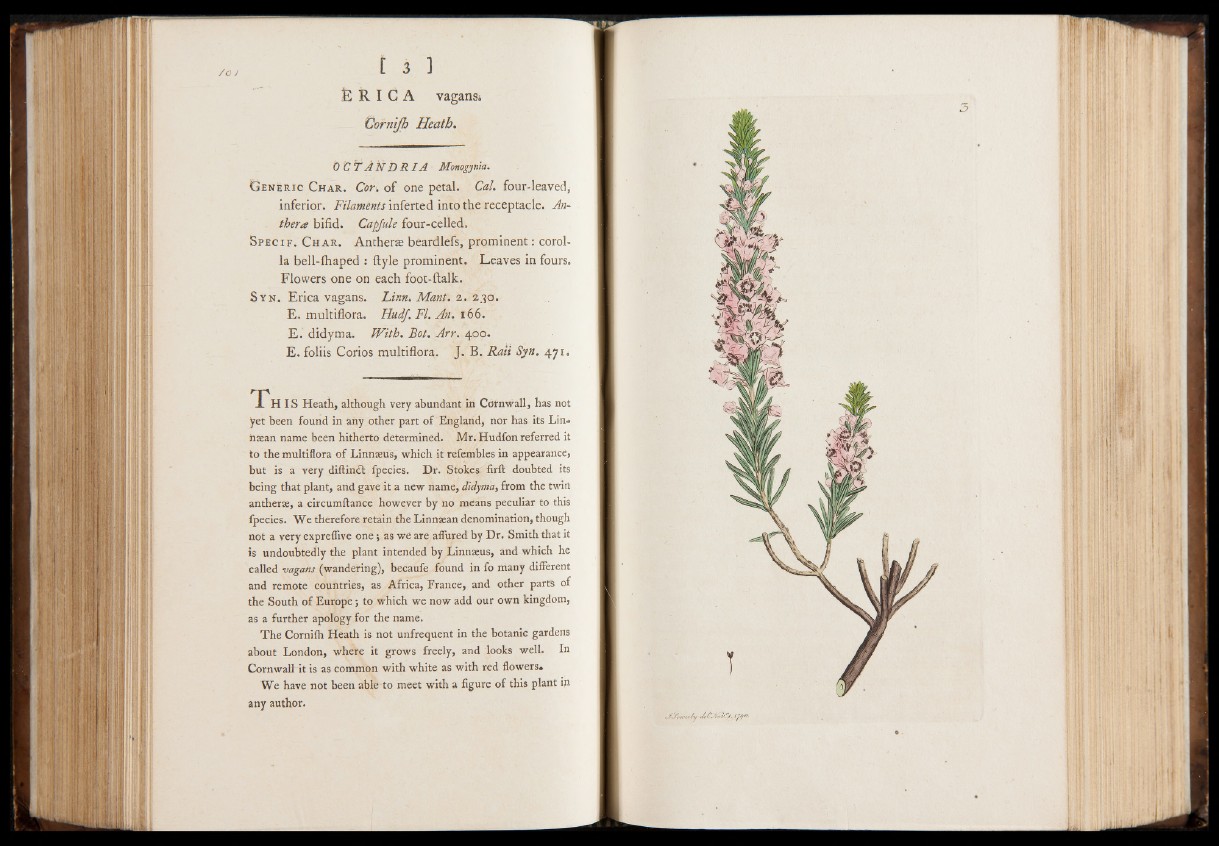
/OJ I 3 1
fe R I C A vagansi
Corni/b Heath.
O C T Ä N D R I A Monogytiia.
Generic Char. Cor. of one petal. Cal. four-leaved,
inferior. Filaments inferted into the receptacle. An-
thera bifid. Capjule four-celled,
Specif. Char. Antherte beardlefs, prominent: corolla
bell-fhaped : ftyle prominent. Leaves in fours.
Flowers one on each foot-ftalk.
S yn. Erica vagans. Linn. Mant. 2. 230.
E . multiflora. H u d f.F l.A n . 166.
E . didyma. With. Bot. A rr. 400.
E . foliis Corios multiflora. J . B. Rati Syn. 471*
T his Heath, although very abundant in Cornwall, has not
yet been found in any other part of England, nor has its Lin-
nsean name been hitherto determined. Mr. Hudfon referred it
to the multiflora of Linnseus, which it refembles in appearance»
but is a very diftin£t fpecies. Dr. Stokes firft doubted its
being that plant, and gave it a new name, didyma, from the twirl
antherse, a circumftance however by no means peculiar to this
fpecies. We therefore retain the Linnaean denomination, though
not a very expreflive one; as we are allured by Dr. Smith that it
is undoubtedly the plant intended by Linnaeus, and which he
called vagans (wandering), becaufe found in fo many different
and remote countries, as Africa, France, and other parts of
the South of Europe; to which we now add our own kingdom,
as a further apology for the name.
The Cornilh Heath is not unfrequent in the botanic gardens
about London, where it grows freely, and looks well. In
Cornwall it is as common with white as with red flowers.
We have not been able to meet with a figure of this plant in
any author.